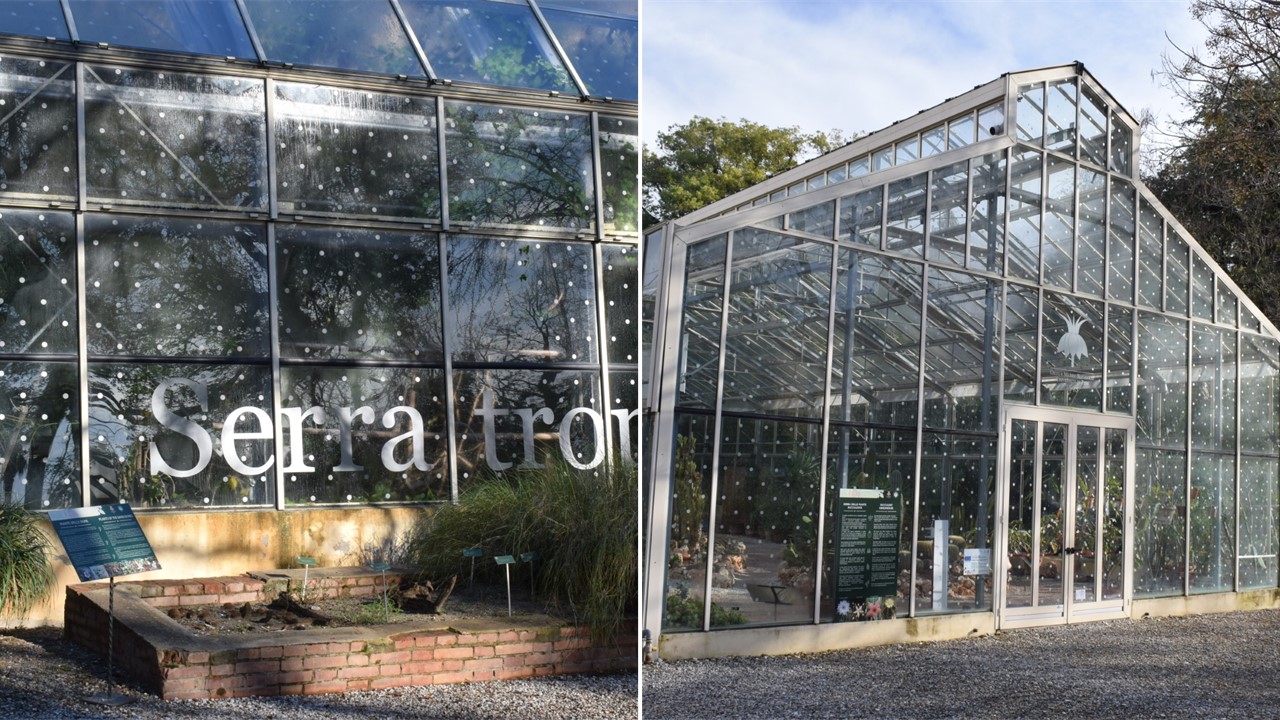Protecting Birds from Glass Collisions: Innovative Greenhouse Design at the Pisa Botanic Garden
-
Country
Italy -
Region
Europe -
Workstream
Sharing Knowledge and Resources -
Topic
Plant Conservation -
Type
News -
Source
BGCI Member
News published: 6 October 2025
Every year in Italy, an estimated 15 million birds die in collisions with glass surfaces, according to LIPU (the Italian League for Bird Protection). This nationwide problem was also evident at the Botanic Garden and Museum of the University of Pisa (BGM-PI), where annual records documented bird deaths caused by impacts with the large greenhouse windows. To address this threat, BGM-PI has undertaken an innovative project to safeguard both its heritage structures and the birdlife that thrives within its grounds.
Located in the heart of Pisa, BGM-PI is the world’s oldest university botanic garden by foundation date (1543), established by the physician Luca Ghini to study and teach medicinal plants. Beyond its role in research, education, and conservation, the Garden represents a green oasis in the city center, hosting not only cultivated plants but also spontaneous biodiversity. Approximately 50 bird species— resident, migratory, and wintering —find refuge here, attracted by the availability of fruits, seeds, insects, and other invertebrates. However, the transparency and reflectivity of greenhouse glass have long posed a serious risk to birds, which are unable to recognize these surfaces as obstacles. The reflections of sky or vegetation, or the sight of plants beyond the glass, often lead to fatal impacts. Greenhouses are particularly problematic, as glass is essential for ensuring the correct thermal and lighting conditions required by many plant species.
To mitigate this issue, in 2023 BGM-PI applied a modern solution to the two largest greenhouses — the Succulent and the Tropical greenhouses — covering 640 m² of glass with a patterned film. The design consists of a mesh grid of white adhesive discs, each 2.5 cm in diameter, placed 20 cm apart diagonally. The discs were combined with the Garden’s institutional logo and the names of the greenhouses, blending functionality with aesthetics while respecting the cultural and architectural value of the site. The results from the first two years of monitoring were recently presented at the 22nd Italian Ornithology Conference, held in Lecce in September 2025. During this period, only a single collision was recorded, confirming that the intervention has reduced incidents to virtually zero.

Among the birds now more safely enjoying the Garden are the Grey Heron (Ardea cinerea), Eurasian Scops Owl (Otus scops), Green Woodpecker (Picus viridis), Blackcap (Sylvia atricapilla), Common Redstart (Phoenicurus phoenicurus), Hoopoe (Upupa epops), Blue Tit (Cyanistes caeruleus), European Goldfinch (Carduelis carduelis), Long-tailed Tit (Aegithalos caudatus), and Firecrest (Regulus ignicapilla). Their presence highlights the value of this historic institution not only as a center for plant science, but also as a sanctuary for urban biodiversity. This initiative reminds us how botanic gardens can successfully integrate conservation, heritage preservation, and innovation to create safer urban environments for wildlife.
BGCI Member Announcement
Are you a BGCI Member? Do you have a news announcement, event, or job posting that you would like to advertise? Complete the form at the link below!
Become a Member
Be part of the largest network of botanic gardens and plant conservation experts in the world by joining BGCI today!